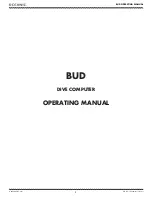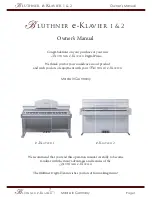
Section 3. CR9000 Measurement Details
3-9
TABLE 3.4-1. Limits of Error for Thermocouple Wire (Reference
Junction at 0
o
C)
Limits of Error
Thermocouple Temperature
(Whichever is greater)
Type Range
o
C Standard
Special
T
-200 to 0
±
1.0
o
C or 1.5%
0 to 350
±
1.0
o
C or 0.75%
±
0.5
o
C or 0.4%
J
0 to 750
±
2.2
o
C or 0.75%
±
1.1
o
C or 0.4%
E
-200 to 0
±
1.7
o
C or 1.0%
0 to 900
±
1.7
o
C or 0.5%
±
1.0
o
C or 0.4%
K
-200 to 0
±
2.2
o
C or 2.0%
0 to 1250
±
2.2
o
C or 0.75%
±
1.1
o
C or 0.4%
R or S
0 to 1450
±
1.5
o
C or 0.25%
±
0.6
o
C or 0.1%
B
800 to 1700
±
0.5%
Not Estab.
When both junctions of a thermocouple are at the same temperature there is no
voltage produced (law of intermediate metals). A consequence of this is that a
thermocouple can not have an offset error; any deviation from a standard
(assuming the wires are each homogeneous and no secondary junctions exist) is
due to a deviation in slope. In light of this, the fixed temperature limits of error
(e.g.,
±
1.0
°
C for type T as opposed to the slope error of 0.75% of the temperature)
in the table above are probably greater than one would experience when
considering temperatures in the environmental range (i.e., the reference junction, at
0
°
C, is relatively close to the temperature being measured, so the absolute error -
the product of the temperature difference and the slope error - should be closer to
the percentage error than the fixed error). Likewise, because thermocouple
calibration error is a slope error, accuracy can be increased when the reference
junction temperature is close to the measurement temperature. For the same reason
differential temperature measurements, over a small temperature gradient, can be
extremely accurate.
In order to quantitatively evaluate thermocouple error when the reference
junction is not fixed at 0
o
C, one needs limits of error for the Seebeck
coefficient (slope of thermocouple voltage vs. temperature curve) for the
various thermocouples. Lacking this information, a reasonable approach is to
apply the percentage errors, with perhaps 0.25% added on, to the difference in
temperature being measured by the thermocouple.
Accuracy of the Thermocouple Voltage Measurement
The accuracy of a CR9000 voltage measurement is specified as 0.07% the
measured voltage plus 4 A/D counts of the range being used to make the
measurement. The input offset error reduces to 1 A/D count if a differential
measurement is made utilizing the option to reverse the differential input.
Содержание CR9000
Страница 6: ...CR9000 Table of Contents iv This is a blank page ...
Страница 22: ...CR9000 Overview OV 16 This is a blank page ...
Страница 26: ...Section 1 Installation 1 4 CR9000 FIGURE 1 1 3 CR9000 Battery Pack ...
Страница 72: ...Section 3 CR9000 Measurement Details 3 28 This is a blank page ...
Страница 88: ...Section 5 Program Declarations 5 6 This is a blank page ...
Страница 217: ...This is a blank page ...
















































